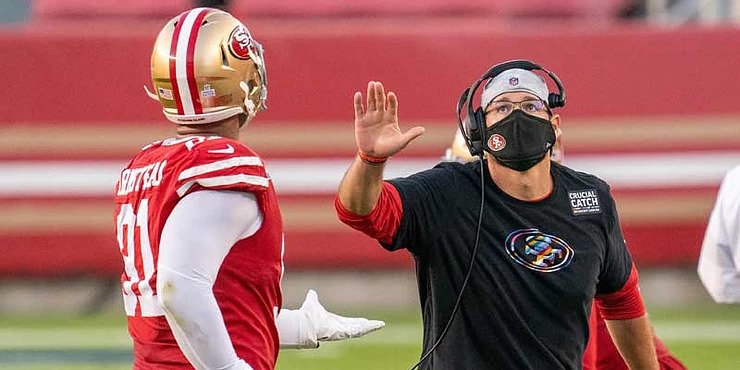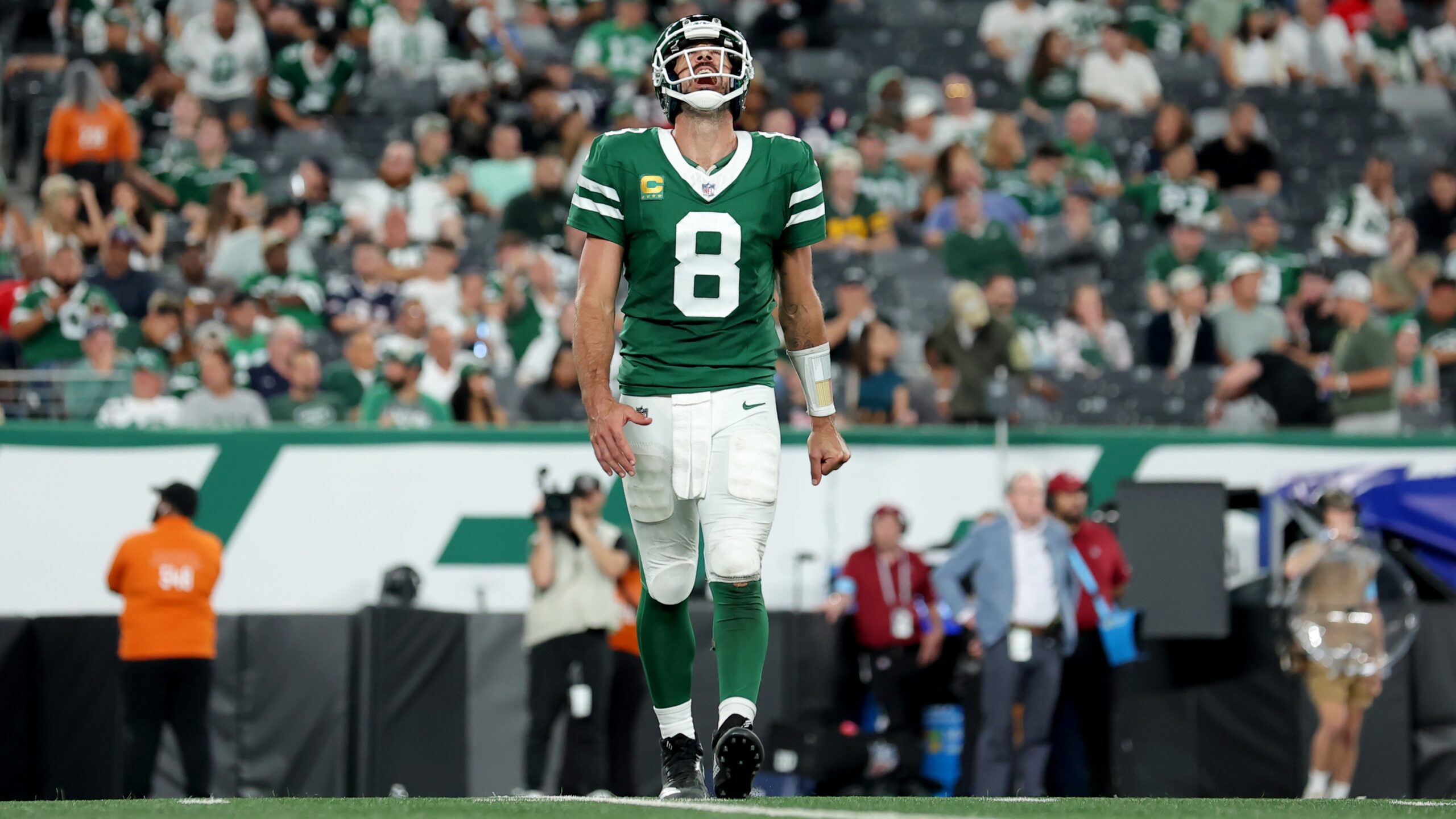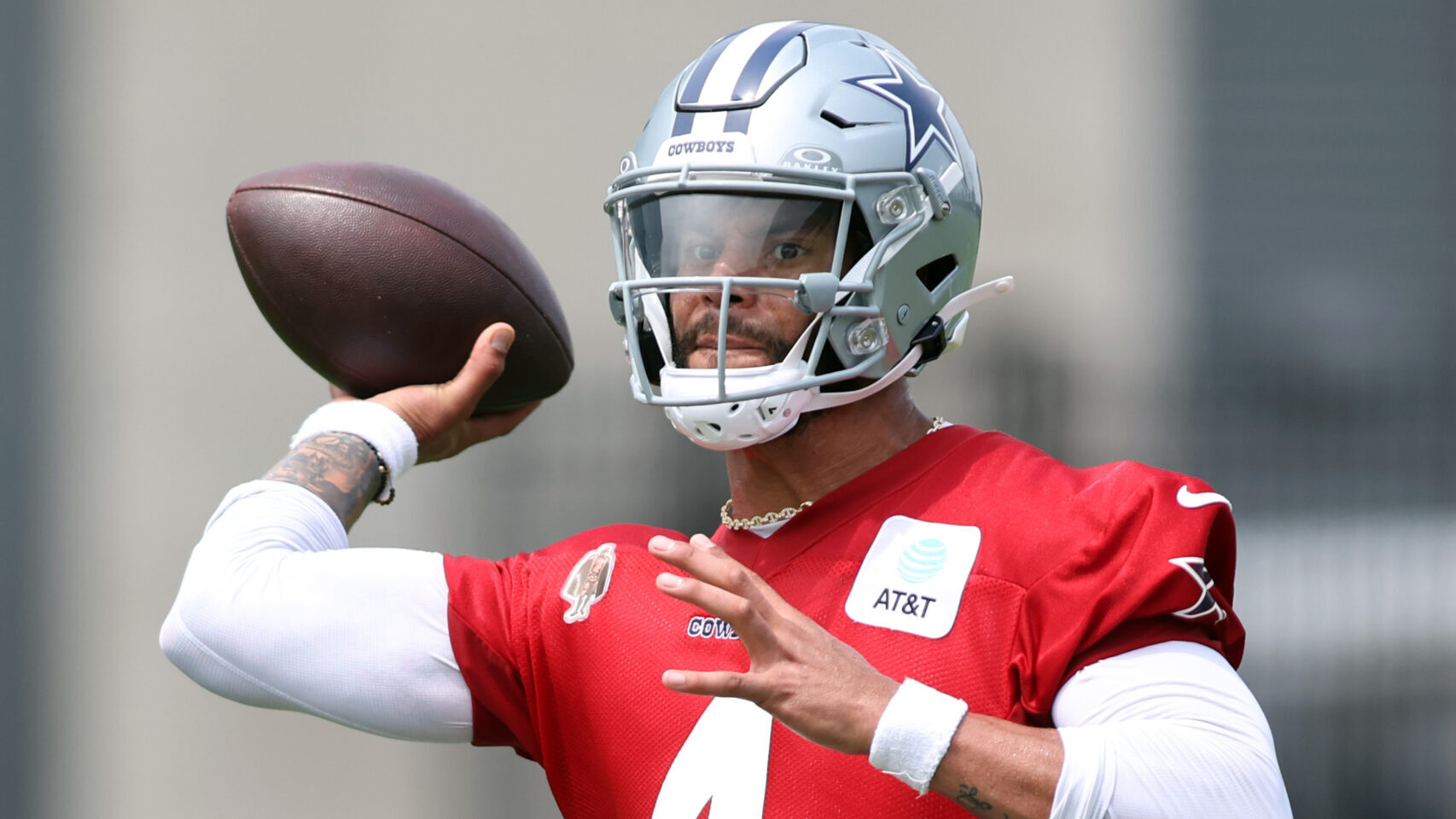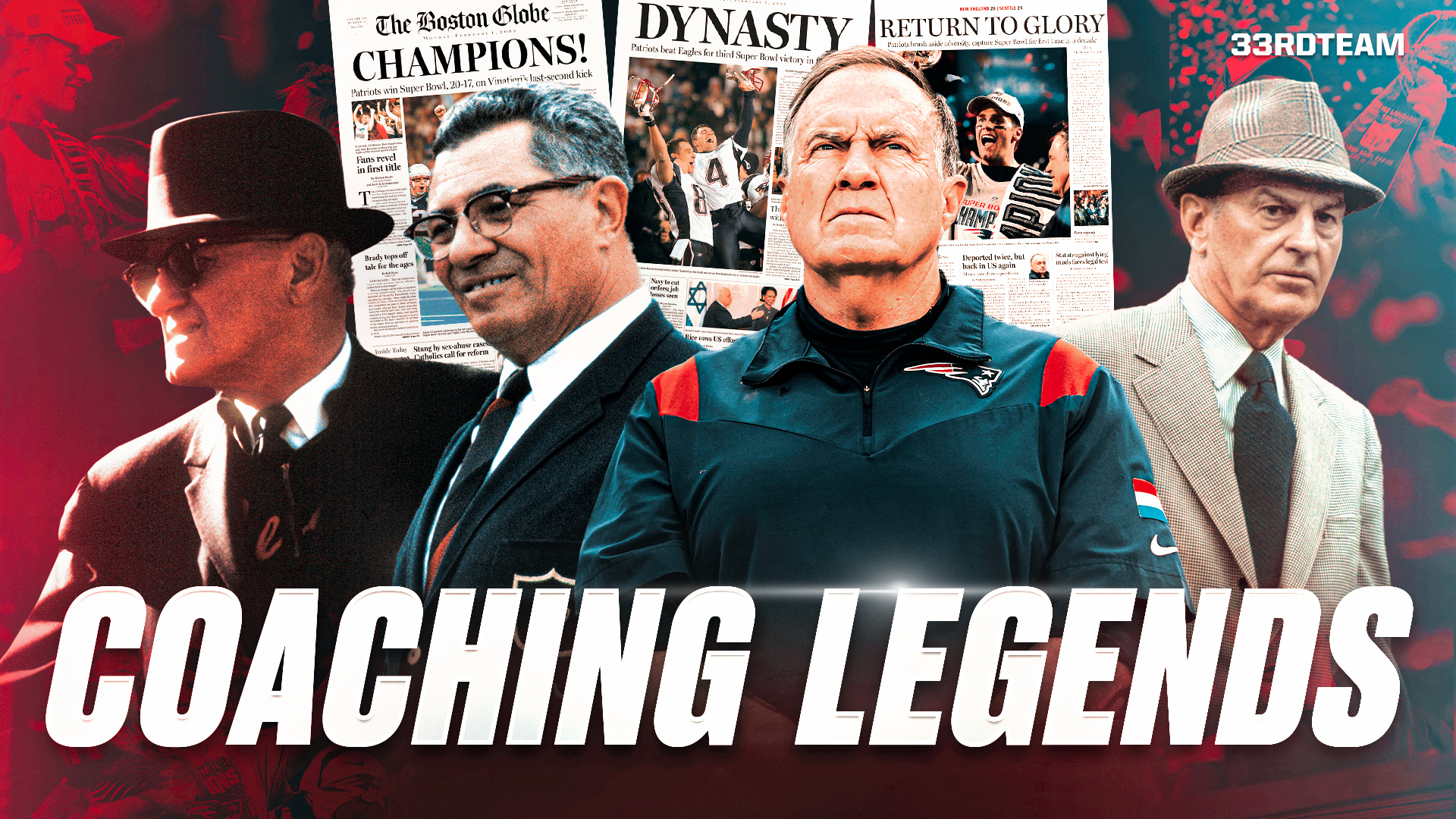Analysis
4/1/21
6 min min read
Who Are the Top Defensive Assistants in the NFL and College?

By Peter Engler and Robert Simpson
Last week, we released our list of top offensive assistants based on specific methodology. The same methodology for finding the best offensive coaches was also applied to defensive coaches. Just looking at a team’s performance during that coach’s tenure does not tell the full story. A coach at a school like Alabama is already set up for more success than one at a smaller school, so just looking at the team’s performance without establishing a baseline will skew the results in favor of coaches with access to more talent.
To overcome this talent gap, the coach’s performance must be compared to how the team was performing prior to the coach’s arrival. For this study, a team’s performance was quantified using Expected Points Added, or EPA. A refresher on EPA can be found here.
For each team in NCAA Div. I and the NFL, EPA was calculated on a per-play basis for each season to account for pace of play. It was also broken down into EPA per rush and EPA per pass, so that coaches whose position groups are primarily involved in only one phase of the game (such as DB coaches mainly impacting the passing game) could be judged appropriately. NCAA teams only counted games against other FBS teams, so as to limit inflated performances against FCS teams.
Then the EPA per play allowed by the coach’s current team was averaged for the three years prior to his arrival to establish a baseline of performance. This baseline was compared to the team’s average EPA per play allowed the first three years of the coach’s tenure there (or as many years as he has been with the team if less than three). The more EPA per play the team’s defense prevented during the coach’s tenure over the baseline before he arrived, the better the coach was judged to be.
NFL
Gerald Alexander, Dolphins DBs Coach
After making it to the top of his profession as a player, starting all 16 games as a rookie second-round pick in Detroit, Gerald Alexander started over as an undergraduate assistant with Arkansas State and has improved and progressed each year to his current role with the Miami Dolphins. After a 2019 bottom-out year that saw Miami allow a league-most passing touchdowns in the NFL’s worst scoring defense, Alexander joined before the 2020 season and has pushed their unit to new heights, allowing the second-fewest passing TDs and intercepting the most passes. Coaching up first-time All-Pro Xavien Howard to a league-leading 10 INTs and 20 PDs, this defense has become dominant situationally, with the best percentage of third-down stops and the seventh-best red-zone percentage.
Chris Hewitt, Ravens Pass Defense Coordinator
Although Chris Hewitt is technically only entering his second season as the Pass Defense Coordinator for Baltimore, his fingerprints are all over this secondary due to his preceding eight-year tenure as their DBs coach. Joining the team after a stretch of four consecutive top-three scoring defenses and still creating improvement is tough, but Hewitt has managed to pull it off with a Super Bowl title in his first season and consistent production to his defense’s strengths. Opposing coordinators haven’t been able to figure him out due to the various strengths he can build into his unit, from six top-10 finishes in passing TDs allowed and six such rankings for third-down defense to five top-10 red-zone defenses. The defense is lucky to have him.
Kacy Rodgers, Buccaneers DL Coach
In five seasons with Denver from 2014-2018, former UDFA Shaquil Barrett compiled 14.0 sacks. In only two seasons with Kacy Rodgers, Barrett led the league with 19.5 sacks and added another 8.0 in 2020. Of course, one player’s improvement doesn’t make a good coach. However, Rodgers has caused these kinds of improvements multiple times, with Joey Porter (plus-12.0 sacks), Cameron Wake (plus-8.5 sacks), Olivier Vernon (plus-8.0 sacks), Muhammad Wilkerson (plus-6.0 sacks) and DE Henry Anderson (plus-5.0 sacks) all taking sizeable jumps under Rodgers’ tutelage. Much of the credit for the defensive turnaround in Tampa goes to DC Todd Bowles, but don’t forget about the consistent impact Rodgers has shown in getting the best out of his players.
Kris Kocurek, 49ers DL Coach
With the 49ers, Kris Kocurek is a standout example of a coach who gets everybody moving in the same direction. Coming on board after a 2018 season that saw San Francisco finish with the fifth-worst scoring defense, Kocurek’s defensive line was the catalyst for a 20-spot jump and a Super Bowl appearance. Even in the injury-filled follow-up campaign, he coaxed a career-high 8.5 sacks out of journeyman Kerry Hyder for the fifth-best total defense in the game. Previously, he was seen leading a rookie Ndamukong Suh to a DROY and All-Pro season, then following it up with two more All-Pro nods and five total Pro Bowls. In the upcoming 2021 season, look for big things on the San Francisco 49ers defensive line once again.
Teryl Austin, Steelers Secondary Coach
In NFL circles, Pittsburgh is known as a bastion of consistency, with only two head coaches, six offensive coordinators, and three defensive coordinators since the turn of the century. As a 2019 addition, Teryl Austin hasn’t built that legacy with the team yet, but the early results are outstanding. In two seasons, Austin has two top-five scoring (and total) defenses, two top-three passing defenses and a pair of campaigns better than at least 30 other teams for interceptions. Austin has led CB Joe Haden to his first Pro Bowl since his 2014 season in Cleveland and turned midseason trade acquisition Minkah Fitzpatrick into a defensive centerpiece and two-time All-Pro. With a potential QB transition around the corner, the Steelers are going to lean on Austin to deliver, and he seems to be just the man for the job.
NCAA
Chad Staggs, Coastal Carolina Defensive Coordinator
Entering his third season heading the defense, Chad Staggs will soon have been the defensive coordinator for a full 50% of Coastal Carolina’s seasons in the FBS. You wouldn’t know it from their results, however, as the team exploded onto the scene with an 11-1 campaign in 2020 behind the 20th-best scoring defense in the country. Despite lacking the brand recognition or history to pull in top recruits, Staggs has led five players to 5-plus sack seasons and another three to campaigns of 3-plus INTs. If Coastal Carolina can hang onto their Broyles Award semifinalist, it will be fascinating to watch what he can do with better and better recruits.
David Reeves, UAB Defensive Coordinator
As a two-time Broyles Award nominee, David Reeves is another coach who has transcended the limitations of a younger, less-heralded program to make a national impact. When it matters most, Reeves manages to get his defense off the field with a pair of consecutive top-three third-down defenses followed by a 2020 seventh-place finish. Consistently a top scoring defense, Reeves has moved on to setting conference records for shutouts in a season and school records for sacks and TFLs. To be succinct, UAB had managed three total seasons over 0.500 at the FBS level before Reeves arrived on campus in 2014. In the five seasons since, accounting for the program’s two-year hiatus, Reeves and UAB haven’t finished below 0.500 since.
Patrick Toney, Louisiana Defensive Coordinator
Take it from Louisiana head coach Billy Napier: “Patrick Toney is a difference maker, and one of the brightest young coaches in our profession.” After two years as the team’s safeties coach and the 2020 campaign at DC, it’s hard to disagree. Despite a promotion on the backs of a program-best 11-3 record and the various challenges of the 2020 season, Louisiana actually improved. Behind a pass defense that allowed only 51.9% completion (fourth nationally) and 170.6 passing yards per game (sixth), the team finished 10-1, with their only loss to Coastal Carolina, and managed their first AP ranking ever at 15. Eight different defenders intercepted a pass, with seven managing career-bests in the stat. With the benefit of a full offseason, there’s no limit on Louisiana in 2021.
Alex Grinch, Oklahoma Defensive Coordinator
For much of the 2010s, Oklahoma was known as the team that lacked the defense to win in the playoffs. Behind two different Heisman-winning QBs in Baker Mayfield and Kyler Murray, Oklahoma lost three times in the national semifinals to 35-plus-point outlays between 2015 and 2018. Coming on the job in 2019, Alex Grinch immediately turned Oklahoma into the best defense in the Big 12 right after finishing a similar turnaround at Washington State under Mike Leach. In 2020, Oklahoma was the 29th-best scoring defense in the country and the ninth-best run defense. Although they ran into Joe Burrow’s LSU buzzsaw in 2019, Grinch is putting the pieces together for a playoff run that will change the school’s narrative.
Brian Newberry, Navy Defensive Coordinator
At Navy, the offensive dedication to the run game puts stress on the defense to keep the score close. In Brian Newberry, the program has found a coach that can do just that. With the 10th-best passing defense in 2020, Newberry has built on his record-setting 2019 season with the program, itself a 101-spot improvement in third-down defense, 80-spot improvement in run defense and 69-spot improvement in scoring defense. All of this is on the back of his tenure as the defensive coordinator at FCS Kennesaw State, leading the national quarterfinalists to second- and seventh-ranked scoring defenses. His competition is a step higher now, but Newberry is still producing.






